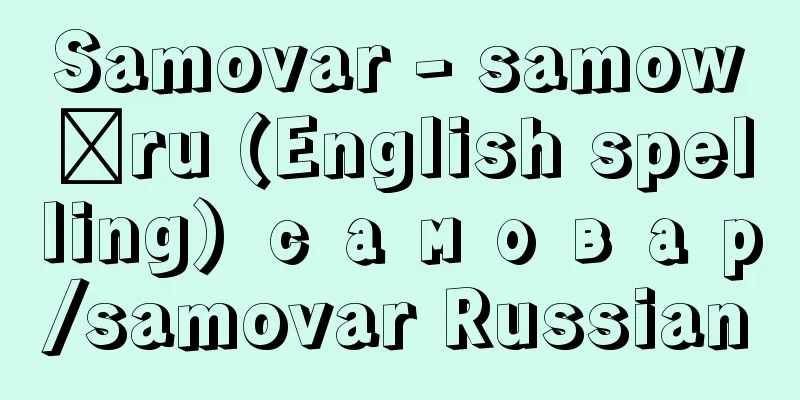Siena (English spelling)

|
The capital of the province of Siena in Tuscany, central Italy. Population 48,844 (2001 census preliminary figure). Located on a hill 322 meters above sea level along the Via Cassia, this ancient city is home to the unique shell-shaped Piazza del Campo, Palazzo Publico (currently the city hall), and the Cathedral, which still tell the story of the city's prosperity from the 12th to 14th centuries. However, because it was far from the main railway line and located in a traditional tenancy zone, it fell far behind in the process of modernization. Wine, flour, confectionery, etc. are produced, but the city's economy is basically supported by commerce, tourism, the university, and the activities of the Siena Cattle Bank, which is based here. A traditional horse race called the Palio is held twice a year. In 1995, the historic center of Siena was registered as a World Heritage Site (World Cultural Heritage). [Kenichi Sakai] historyIt developed during the Roman Empire and became a free city in the first half of the 12th century. Since then, great merchants and bankers have produced here and accumulated wealth, but a fateful feud with neighboring Florence has begun. The city's heyday was from the mid-13th century until 1355, when the oligarchy of the great merchants was overthrown, during which the cathedral and town hall were built and artists such as Simone Martini were active. However, after that, the city became politically unstable, and in 1554 it came under Spanish control, and in 1559 it was handed over to the Medici family and annexed to the Grand Duchy of Tuscany. [Kanji Arizato] [References] |A representative example of early Italian Gothic architecture. There is a rose window above the triple entrance on the west front. Construction began in the mid-12th century, but it was finally completed in 1382. Part of the World Heritage Site "Historic Center of Siena" (Italy, registered in 1995) Siena, Italy ©Shogakukan "> Siena Cathedral Source: Shogakukan Encyclopedia Nipponica About Encyclopedia Nipponica Information | Legend |
|
イタリア中部、トスカナ州シエナ県の県都。人口4万8844(2001国勢調査速報値)。カッシア街道沿いの標高322メートルの丘上に位置する古都で、貝の形をした独創的なカンポ広場、現在市庁舎となっているプブリコ宮殿(パラッツォ・プブリコ)、大聖堂などがあり、とりわけ12~14世紀の繁栄ぶりを今日に伝えている。しかし幹線鉄道から離れ、伝統的な折半小作制地帯に位置したため、近代化の過程では大きく遅れをとった。ぶどう酒、小麦粉、菓子などが生産されるが、市の経済を基本的に支えているのは、商業、観光業、大学と、この地を拠点とするシエナ牧畜銀行の活動である。年2回、パリオとよばれる伝統的な競馬が催される。なお、1995年にシエナの歴史地区は世界遺産の文化遺産として登録されている(世界文化遺産)。 [堺 憲一] 歴史帝政ローマ時代に発達し、12世紀前半に自由都市となった。以来、大商人、銀行家が輩出し、富を蓄積するが、隣国フィレンツェとの宿命的確執が始まる。13世紀なかばより、大商人の少数独裁体制が倒れた1355年までが最盛期であり、大聖堂、市庁舎などが建設され、シモーネ・マルティーニなどの芸術家が活躍した。しかし以後は政治的に不安定で、1554年スペインの支配下に入り、59年メディチ家に譲渡されてトスカナ大公国に併合された。 [在里寛司] [参照項目] |イタリア初期ゴシックの代表的建築。西正面三連入口の上にはバラ窓がしつらえられている。12世紀中期に起工されたが、最終的に完成をみたのは1382年である。世界文化遺産「シエナ歴史地区」の一部(イタリア・1995年登録) イタリア シエナ©Shogakukan"> シエナ大聖堂 出典 小学館 日本大百科全書(ニッポニカ)日本大百科全書(ニッポニカ)について 情報 | 凡例 |
<<: Siena Cathedral - Duomo di Siena
Recommend
Cinchona ledgeriana (English spelling) Cinchona ledgeriana
…[Mr. Makoto Fukuoka] [Mr. Aya Nitta]. … *Some of...
Dart - Raymond Arthur Dart
Born in Brisbane, Australia, he was an anatomist ...
Government money - Kansen
〘noun〙① Coins issued by the government. Not privat...
Torinoko paper - Torinoko paper
A type of washi paper. It is also called Torinoko ...
The Story of Kyoruo-ru - The Story of Kyoruo-ru
A masterpiece of Turkish folk literature with the ...
Bayt Laḥm (English spelling)
…It means "House of Bread" in Hebrew. I...
Realism - Jitsuzairon (English spelling) realism
A translation of the word "realism" in ...
Sociometry - Sociometry
In a broader sense, it is a collective term for t...
Index Society
…The British magazines Punch and Illustrated Lond...
Trapani (English spelling)
A port city on the island of Sicily in southwest I...
Ishikushiro
It means a stone bracelet. However, the term ishi...
King, BB (English spelling) KingBB
...guitar), Robert Johnson (1912?-38, guitar), a ...
Nuruosmaniye
...At court, the harem became a hotbed of politic...
Kamaishi Port
…The main means of transportation to inland areas...
Epstein, B. (English notation) EpsteinB
...In 1961, during their third visit to Hamburg, ...









